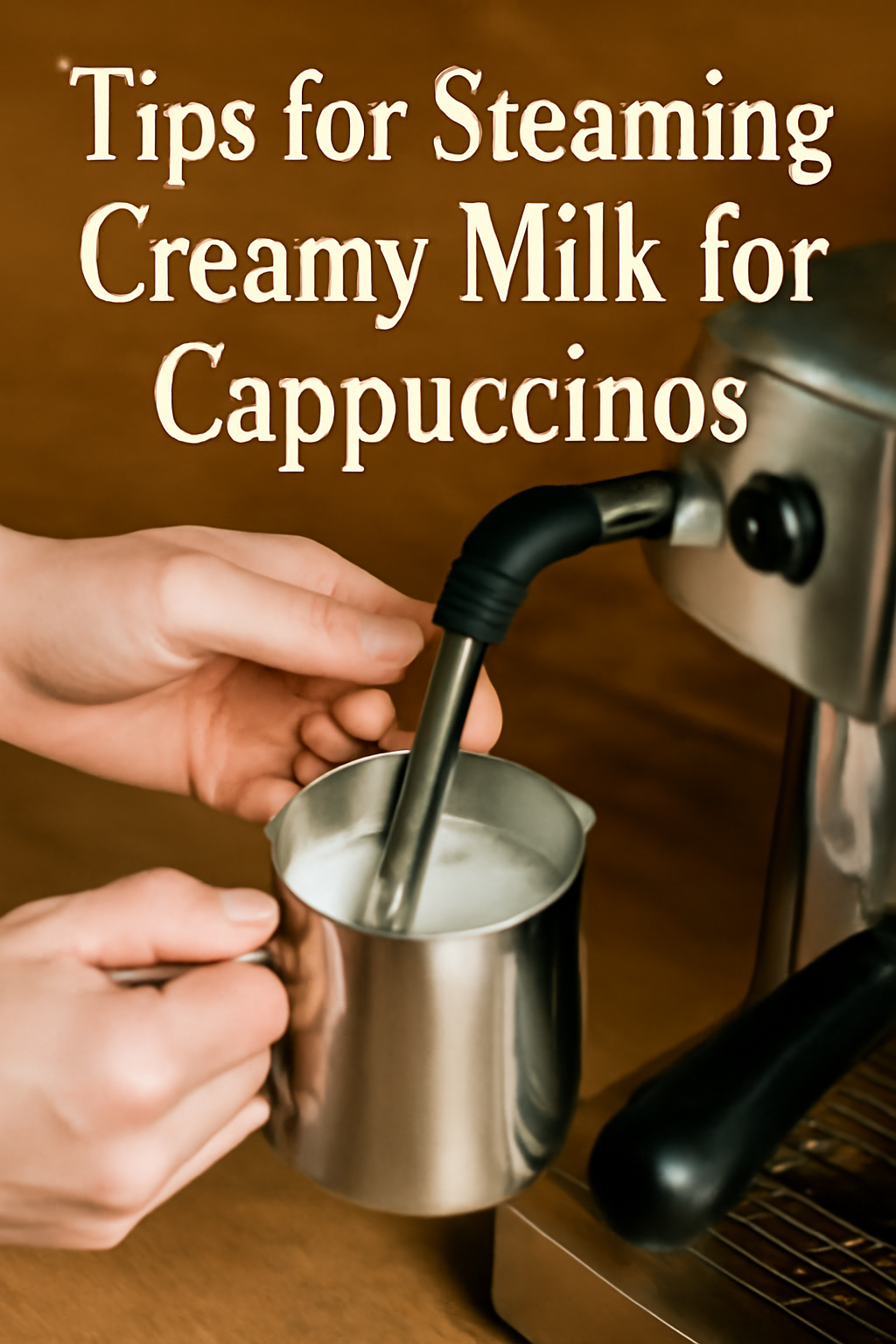Steaming milk is an essential skill for any barista, especially when preparing cappuccinos. The right technique transforms ordinary milk into a velvety, creamy microfoam that enhances the flavor and texture of the coffee. Perfectly steamed milk adds sweetness, balances espresso’s bitterness, and creates a smooth mouthfeel that coffee lovers crave. In this article, you will learn expert tips and step-by-step guidance to steam milk like a pro, ensuring your cappuccinos impress every time.
Understanding Milk and Its Role in Cappuccinos
Milk is more than just an additive in cappuccinos; it plays a critical role in flavor and texture. The proteins and fats in milk interact with espresso, creating a harmonious blend. When steamed correctly, milk’s natural sweetness is enhanced, and the texture becomes creamy without being overly thick or frothy.
The goal of steaming milk for cappuccinos is to create microfoam—tiny, uniform bubbles suspended in the milk that give it a silky, glossy appearance. This microfoam blends seamlessly with espresso, giving cappuccinos their signature velvety texture.
Choosing the Right Milk
The type of milk you use impacts the steaming process and final texture. Whole milk is preferred by many baristas due to its balanced fat and protein content, which produces a rich and creamy microfoam. However, alternatives like 2% milk, skim milk, and plant-based options (such as oat, almond, or soy milk) can also be steamed effectively with some adjustments.
Plant-based milks vary widely in composition and may require different steaming techniques. Oat milk, for example, steams well and produces creamy foam, while almond milk may foam less and require more careful steaming.
Equipment Essentials for Steaming Milk
- Espresso Machine with Steam Wand: A reliable machine capable of producing consistent steam pressure and temperature is crucial.
- Milk Pitcher: Stainless steel pitchers with a pointed spout are ideal for controlling pour and creating latte art.
- Thermometer (Optional): Helps monitor milk temperature to avoid overheating.
- Clean Cloth: For wiping and purging the steam wand.
Step-by-Step Guide to Steaming Milk
1. Start with Cold Milk and Pitcher
Use fresh, cold milk straight from the refrigerator. Fill your milk pitcher up to one-third full to allow room for milk expansion during steaming.
2. Purge the Steam Wand
Before steaming, purge the steam wand by briefly opening it to release any residual water or milk. This ensures dry steam for better texture.
3. Position the Steam Wand
Submerge the steam wand tip just below the milk surface at an angle. Positioning is key to introducing air and creating microfoam.
4. Introduce Air (Stretching Phase)
Turn on the steam wand and slightly lower the pitcher to keep the tip near the surface. You should hear a gentle hissing sound as air is incorporated. Stretch the milk by adding air for 3 to 5 seconds, depending on the amount of milk and desired foam.
5. Heat and Texture (Rolling Phase)
After introducing air, raise the pitcher to fully submerge the wand. This creates a whirlpool effect that heats the milk evenly and breaks down larger bubbles into microfoam. Keep steaming until the pitcher feels warm to the touch, approximately 55°C to 65°C (130°F to 150°F).
6. Turn Off Steam and Wipe Wand
Turn off the steam wand before removing it from the milk to avoid splashing. Immediately wipe the wand with a clean cloth and purge again to clear milk residue.
7. Tap and Swirl the Milk
Tap the pitcher gently on the counter to break large bubbles, then swirl the milk to integrate the foam and liquid, creating a smooth, glossy texture.
8. Pour Milk Into Espresso
Pour the steamed milk into the espresso steadily, using the pitcher’s spout to control flow and create latte art if desired.
Common Mistakes and How to Avoid Them
- Steaming Too Much Air: Excessive frothiness leads to large bubbles and a dry texture. Focus on creating microfoam by limiting the stretching phase.
- Overheating Milk: Milk that exceeds 70°C (160°F) tastes burnt and loses sweetness. Use a thermometer or learn to gauge temperature by touch.
- Incorrect Wand Position: Too deep submersion causes steaming without aeration; too shallow prevents proper heating. Practice wand positioning for balance.
- Not Purging or Cleaning Wand: Residual milk can clog the wand and affect texture and hygiene.
Advanced Tips for Perfect Milk Steaming
- Use fresh milk and clean equipment every time.
- Experiment with different milk brands and types to find what works best.
- Adjust steaming time based on milk volume.
- Practice consistent pitcher movement for uniform texture.
- Use the angle of the pitcher to control the whirlpool strength.
- Allow the milk to rest briefly after steaming for better integration.
The Importance of Practice
Mastering milk steaming takes patience and repetition. Each espresso machine behaves differently, and milk varieties react uniquely. Regular practice helps you develop muscle memory and refine your technique.
Keep a journal of your steaming parameters and results to track progress and adjust accordingly.
How Steamed Milk Enhances Cappuccino Flavor
Steamed milk softens espresso’s natural bitterness and acidity while adding sweetness and body. The creamy microfoam changes the mouthfeel, making cappuccinos richer and more satisfying.
A well-steamed milk texture also improves the visual appeal, allowing for beautiful latte art that enhances the overall customer experience.
Conclusion
Steaming creamy milk for cappuccinos is a fundamental skill for baristas and coffee lovers. Understanding milk’s properties, using the right equipment, and mastering technique will elevate your cappuccino game. Remember, the key is creating smooth microfoam that blends harmoniously with espresso to deliver a delicious, velvety coffee experience.
Keep practicing, experimenting, and refining your skills to consistently produce creamy, flavorful cappuccinos that delight every time.

